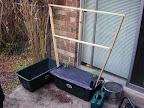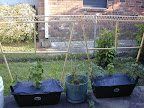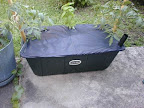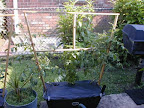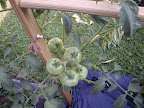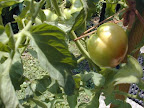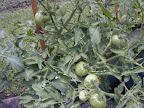Wanting a change from brisket, but still looking for a cut of beef to slow-cook, I decided to try a tri-tip roast. They usually average two pounds as typically trimmed by your grocer. This one was a USDA Choice, priced at $2.99/lb. at a local supermarket. I got started at around 11:30am, figuring it to be done, rested and ready to eat by about 5:00pm.
While firing up a Weber chimney-and-a-half of charcoal, I trimmed some fat off the roast to leave about a 1/8-inch layer. I then coated it lightly with olive oil, and sprinkled on some McCormick’s Montreal Steak Seasoning– great on grilled steaks– surprisingly good on slow-cooked beef barbecue. By 12:30pm, the coals were ready and I put the meat on the top grate. I added a large chunk of hickory, and a medium chunk of oak. With the bottom vents all closed, the temp dropped quickly from 315° to 210. I opened two bottom vents about 1/3 each, and the temp rose only to about 225. I then remembered I was using only 3/4 of the amount of charcoal I usually do, so I cracked the 2 vents to about 1/2 open each, which brought me to my target 240-250° range.
Things sailed along fine, and, at about 3:00pm, I broke out the digital probe thermometer to find I was already at 159°. I was going to be done much sooner than anticipated. It’s probably because I didn’t have anything else cooking, so there was nothing but the roast to absorb the heat energy. Within a half hour, I was at 165. No matter– I wrapped it in heavy foil and towels, and put it into a small ice chest to await dinner time. The temperature declined slowly, and since it dropped to 145 before I was ready to eat, I placed it in a 165° warm oven until a little later.
At 5:30pm, I carved it into 1/4-inch thick slices, and served it as-is. It was very tender and had good flavor, but I think I still prefer brisket.
